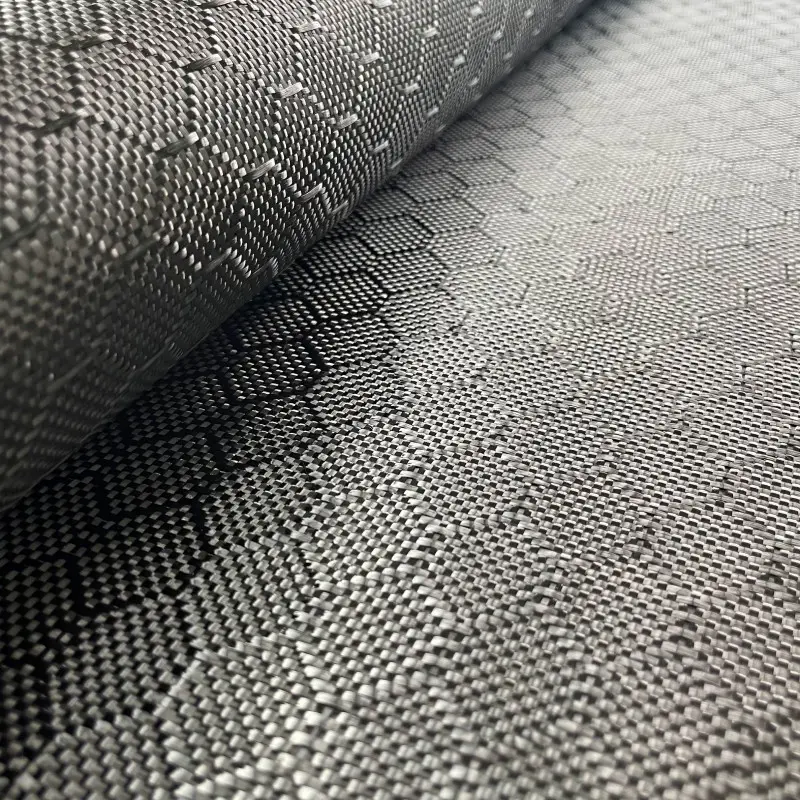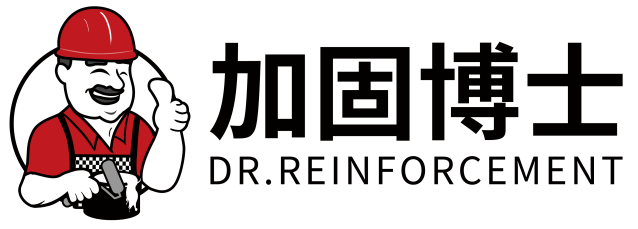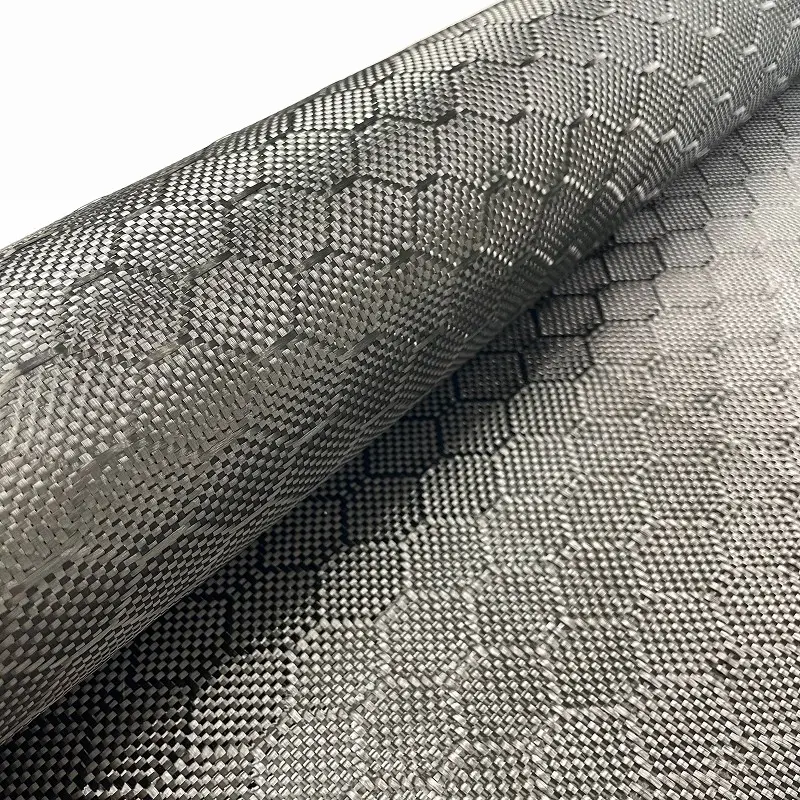Advancing Material Solutions for Modern Industries
In today's rapidly evolving industrial landscape, selecting the right materials has become essential for achieving optimal performance and durability. Among the materials gaining significant attention is Carbon Fiber Bidirectional Fabric. Known for its superior strength, lightweight properties, and versatility, this fabric has transformed how engineers and designers approach complex manufacturing challenges. Its applications span multiple sectors, demonstrating its adaptability and long-term benefits for various technological advancements.
Aerospace Applications
Structural Components and Airframes
Carbon Fiber Bidirectional Fabric has become an indispensable material in aerospace engineering. Its high strength-to-weight ratio allows aircraft designers to reduce overall weight without compromising structural integrity. Components such as wing spars, fuselage frames, and tail sections utilize this fabric to achieve superior durability while maintaining the lightweight design necessary for fuel efficiency and aerodynamic performance. The multidirectional strength of the fabric also ensures stability under varying flight loads and stresses, which is crucial for safety and long-term performance.
Interior Panels and Cabin Structures
Beyond structural elements, Carbon Fiber Bidirectional Fabric is increasingly used in aircraft interiors. Cabin panels, flooring, and partitions benefit from the fabric’s lightweight nature, making it easier to meet strict weight and performance standards. Additionally, the fabric’s resistance to moisture, temperature variations, and chemical exposure ensures that interior components maintain their appearance and functionality over time, providing passengers with a safer and more comfortable flying experience.

Automotive Industry Applications
Chassis and Body Panels
The automotive sector has embraced Carbon Fiber Bidirectional Fabric for its ability to provide strength and rigidity while reducing weight. High-performance vehicles and racing cars often employ this fabric in chassis components and body panels. The lightweight characteristic improves acceleration, handling, and fuel efficiency, while the high-strength properties protect passengers by enhancing crash resistance and overall structural stability.
Interior Components and Custom Parts
Automakers also use Carbon Fiber Bidirectional Fabric for interior trims, dashboards, and custom design elements. Its aesthetic appeal, combined with durability and resistance to wear, makes it a preferred choice for luxury vehicles. Designers can create complex shapes and contours without compromising strength, offering both functional and visual enhancements to vehicle interiors.
Marine and Watercraft Applications
Hull Reinforcements
In the marine industry, Carbon Fiber Bidirectional Fabric provides critical benefits for boat hulls and structural reinforcements. Its exceptional strength allows vessels to withstand high-speed operations and rough sea conditions. The fabric’s lightweight nature contributes to higher performance, speed, and fuel efficiency, which are essential factors for both recreational and professional watercraft.
Decking and Structural Components
Carbon Fiber Bidirectional Fabric is also utilized in decking, bulkheads, and other internal structural components. Its resistance to corrosion and moisture exposure makes it ideal for marine environments, where materials are constantly exposed to water and salt. By using this fabric, manufacturers can extend the lifespan of watercraft while maintaining top-tier performance.
Sports and Recreation Applications
High-Performance Equipment
Sports equipment manufacturers frequently integrate Carbon Fiber Bidirectional Fabric into items such as bicycles, tennis rackets, and ski poles. The fabric’s combination of lightness and strength allows athletes to maximize efficiency and control. For instance, bicycles made with this fabric can be both ultra-light and highly responsive, giving riders a competitive advantage while ensuring safety during extreme conditions.
Protective Gear and Safety Equipment
Protective sports gear, including helmets, guards, and braces, benefits from the energy absorption and impact resistance of Carbon Fiber Bidirectional Fabric. Its ability to maintain shape under high stress and repeated impacts ensures athlete safety while reducing overall weight. This balance of protection and mobility is essential in high-intensity sports where performance and safety must coexist.
Industrial and Construction Applications
Machinery Components
Carbon Fiber Bidirectional Fabric is increasingly utilized in industrial machinery for components that require both high strength and reduced weight. Gears, supports, and structural frames made from this fabric can endure heavy operational loads while minimizing wear on surrounding systems. This contributes to longer machinery life, reduced downtime, and lower maintenance costs.
Building Materials and Architectural Elements
In construction and architecture, the fabric provides unique advantages for façades, panels, and reinforcements. Its lightweight nature simplifies installation while offering enhanced structural performance. Additionally, Carbon Fiber Bidirectional Fabric’s resistance to environmental degradation ensures long-lasting durability, even in challenging weather conditions or high-stress architectural designs.
Energy Sector Applications
Wind Turbine Blades
The renewable energy sector has also recognized the advantages of Carbon Fiber Bidirectional Fabric. Wind turbine blades constructed with this material exhibit high stiffness and low weight, allowing for longer and more efficient blades. This improves energy capture efficiency and reduces operational stress on the turbines, leading to longer service life and higher energy output.
Battery and Fuel Cell Components
In advanced energy storage and fuel cell applications, Carbon Fiber Bidirectional Fabric is employed to reinforce structural elements. Its conductivity and mechanical strength make it suitable for lightweight, high-performance designs that improve system efficiency while maintaining durability under operational stresses.
Technological and Emerging Applications
Robotics and Automation
Carbon Fiber Bidirectional Fabric is increasingly used in robotic arms, drones, and automated systems. Its lightweight and strong properties allow for precise movement, increased payload capacities, and longer operational life. These advantages are critical for industrial automation, aerospace drones, and research robotics, where efficiency and reliability are essential.
Smart Composites and Sensor Integration
Emerging technologies are exploring the combination of Carbon Fiber Bidirectional Fabric with embedded sensors and smart composites. This integration enables real-time structural health monitoring, stress analysis, and environmental tracking. The fabric’s adaptability to these advanced applications makes it a key material in the next generation of high-tech solutions across multiple industries.
FAQ
What industries commonly use Carbon Fiber Bidirectional Fabric?
Aerospace, automotive, marine, sports, industrial machinery, and renewable energy sectors are the primary industries that utilize Carbon Fiber Bidirectional Fabric for its lightweight and high-strength properties.
Can Carbon Fiber Bidirectional Fabric be used for both structural and non-structural components?
Yes, the fabric is versatile enough to be used in critical load-bearing structures as well as interior panels, trims, and other non-structural applications across various industries.
How does Carbon Fiber Bidirectional Fabric improve performance in vehicles and aircraft?
By reducing weight while maintaining strength, Carbon Fiber Bidirectional Fabric enhances fuel efficiency, handling, speed, and overall structural integrity in both vehicles and aircraft.
Is Carbon Fiber Bidirectional Fabric suitable for harsh environmental conditions?
Yes, the fabric exhibits excellent resistance to moisture, chemicals, temperature fluctuations, and corrosion, making it ideal for demanding environments such as marine, industrial, and aerospace applications.
Table of Contents
- Advancing Material Solutions for Modern Industries
- Aerospace Applications
- Automotive Industry Applications
- Marine and Watercraft Applications
- Sports and Recreation Applications
- Industrial and Construction Applications
- Energy Sector Applications
- Technological and Emerging Applications
-
FAQ
- What industries commonly use Carbon Fiber Bidirectional Fabric?
- Can Carbon Fiber Bidirectional Fabric be used for both structural and non-structural components?
- How does Carbon Fiber Bidirectional Fabric improve performance in vehicles and aircraft?
- Is Carbon Fiber Bidirectional Fabric suitable for harsh environmental conditions?


